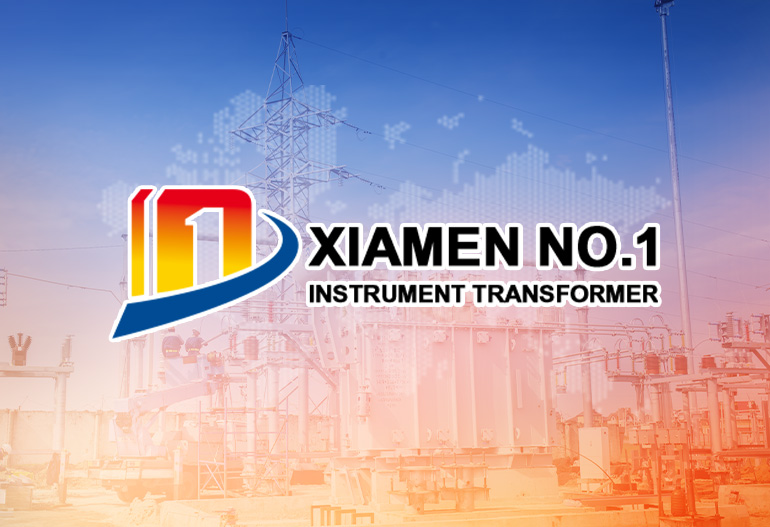
News
Ferrite vs. Silicon Steel in Split Core Current Transformer Design: Performance Comparison
I. Material Composition and Magnetic Properties
| Property | Ferrite | Silicon Steel |
|---|---|---|
| Composition | Ceramic composite of iron oxide (Fe₃O₄) with nickel, zinc, or manganese. | Alloy of iron and silicon (0.5–4.5% Si), sometimes with small metal additions. |
| Magnetic Permeability (μ) | High initial permeability (μ₁ = 100–10,000), ideal for low-frequency applications. | Lower initial permeability (μ₁ = 1,000–6,000) but higher saturation flux density (Bs = 1.5–2.0 T). |
| Saturation Flux Density (Bs) | Low (Bs = 0.3–0.5 T), saturates easily under high currents. | High (Bs = 1.5–2.0 T), withstands higher magnetic fields without saturation. |
| Hysteresis Loss | Low hysteresis due to soft magnetic properties. | Higher hysteresis loss, especially at high frequencies. |
| Eddy Current Loss | Low (high electrical resistivity due to ceramic structure). | Higher (metallic conductivity requires lamination to reduce eddy currents). |
II. Performance in Split Core CTs
1. Ferrite Cores
- Advantages:
Low Core Losses at Low Frequencies: Ideal for 50/60 Hz power systems, where hysteresis and eddy current losses are minimal.
High Impedance Matching: Suitable for CTs with high turns ratios (e.g., 1000:1) in metering or protection relays, as ferrite’s high permeability enhances flux coupling.
Lightweight and Compact: Lower density (4–5 g/cm³) than silicon steel, making split cores easier to handle during installation.
Cost-Effective for Low-Current Applications: Cheaper to produce for CTs rated below 200 A.
- Limitations:
Saturation in High-Current Scenarios: Easily saturates above rated current, leading to accuracy degradation. For example, a 100 A ferrite-core CT may distort readings at 150 A.
Poor High-Temperature Performance: Permeability drops significantly above 100°C, limiting use in high-heat environments (e.g., industrial motor control centers).
Limited Frequency Range: Performance degrades above 1 kHz, unsuitable for harmonic-rich or variable frequency drive (VFD) systems.
- Typical application scenarios:
Residential/commercial energy metering (low to moderate currents).
Smart grid applications with stable, sinusoidal waveforms.
Retrofitting projects requiring lightweight, easy-to-install CTs.
2. Silicon Steel Cores
- Advantages:
High Saturation Tolerance: Can handle overcurrents (e.g., 2×–5× rated current) without saturation, critical for protection relays and fault detection.
Superior Low-Frequency Accuracy: Maintains linearity in sinusoidal waveforms, making it ideal for precision metering in utility grids.
Temperature Stability: Performs reliably up to 150°C, suitable for harsh industrial environments.
Broad Frequency Range: Effective from DC to ~10 kHz, accommodating applications with moderate harmonic content (e.g., some VFDs).
- Limitations:
Higher Core Losses: Laminated construction is needed to reduce eddy currents, increasing complexity and cost.
Heavy and Bulkier: Higher density (7.6–7.8 g/cm³) makes split cores harder to install in tight spaces.
Higher Cost: More expensive than ferrite, especially for large-core sizes or high-current ratings (e.g., >500 A).
- Typical application scenarios:
Industrial power systems (e.g., factories, refineries) with high currents or fault-level demands.
Utility substations requiring robust protection and metering.
High-temperature environments (e.g., near transformers or motors).
III. Key Performance Metrics Compared
| Metric | Ferrite Core CTs | Silicon Steel Core CTs |
|---|---|---|
| Accuracy Class (IEC 61869) | Typically Class 0.5S (for metering) or Class 5P (protection). | Often Class 0.2S (higher precision) or Class 10P (rugged protection). |
| Rated Primary Current (Ipn) | Up to 1,000 A (practical limit due to saturation). | Up to 5,000 A or higher (e.g., in large substations). |
| Burden Voltage (Vb) | Lower burden capability (e.g., 5 VA–20 VA), suitable for low-power secondary circuits. | Higher burden capability (e.g., 20 VA–100 VA), supports longer secondary cables or high-impedance relays. |
| Harmonic Distortion Impact | Sensitive to non-sinusoidal waveforms (e.g., PWM signals from VFDs). | Better tolerance for harmonics up to 30th order (due to higher Bs and frequency range). |
| Installation Ease | Lightweight, tool-free clamping; ideal for retrofits. | Heavier, may require additional mounting hardware in split designs. |
IV. Application-Specific Recommendations
Choose Ferrite Core CTs When:
Low to Moderate Currents (e.g., <500 A) and minimal overcurrent conditions are expected.
Retrofitting in Tight Spaces (e.g., residential panelboards or data center racks) where weight and size matter.
Cost Is a Primary Driver (e.g., large-scale smart meter deployments).
Choose Silicon Steel Core CTs When:
High Accuracy and Overcurrent Protection are critical (e.g., utility grids, industrial motor control).
Harsh Environments (high temperatures, harmonic-rich loads) are present.
Long-Term Reliability and durability are prioritized over initial cost (e.g., in critical infrastructure).
V. Emerging Trends and Alternatives
Nanocrystalline and Amorphous Metals: Emerging materials (e.g., Hitachi’s Finemet) offer ultra-high permeability (μ > 100,000) and low core losses, bridging the gap between ferrite and silicon steel. They are increasingly used in premium split core CTs for high-precision, high-frequency applications (e.g., EV charging stations, renewable energy inverters).
Hybrid Designs: Some manufacturers combine ferrite and silicon steel in layered cores to optimize low-frequency accuracy and high-current tolerance, though these remain niche and costly.
Conclusion
Ferrite excels in lightweight, cost-effective, low-current scenarios (e.g., residential retrofits).
Silicon steel is preferred for high-current, high-reliability applications (e.g., industrial retrofits or utility grids).

XUJIA
I graduated from the University of Electronic Science and Technology, majoring in electric power engineering, proficient in high-voltage and low-voltage power transmission and transformation, smart grid and new energy grid-connected technology applications. With twenty years of experience in the electric power industry, I have rich experience in electric power design and construction inspection, and welcome technical discussions.

